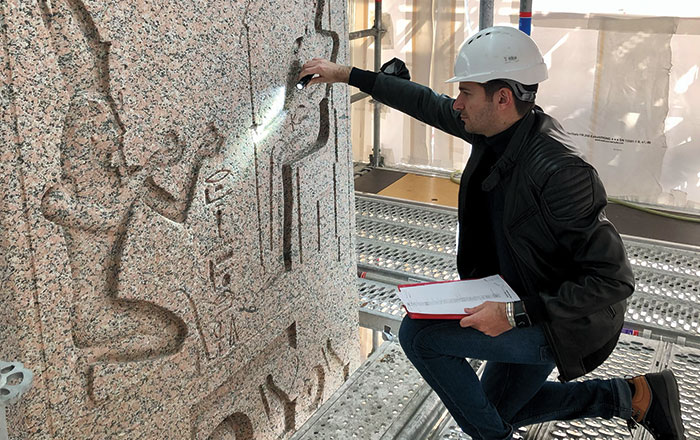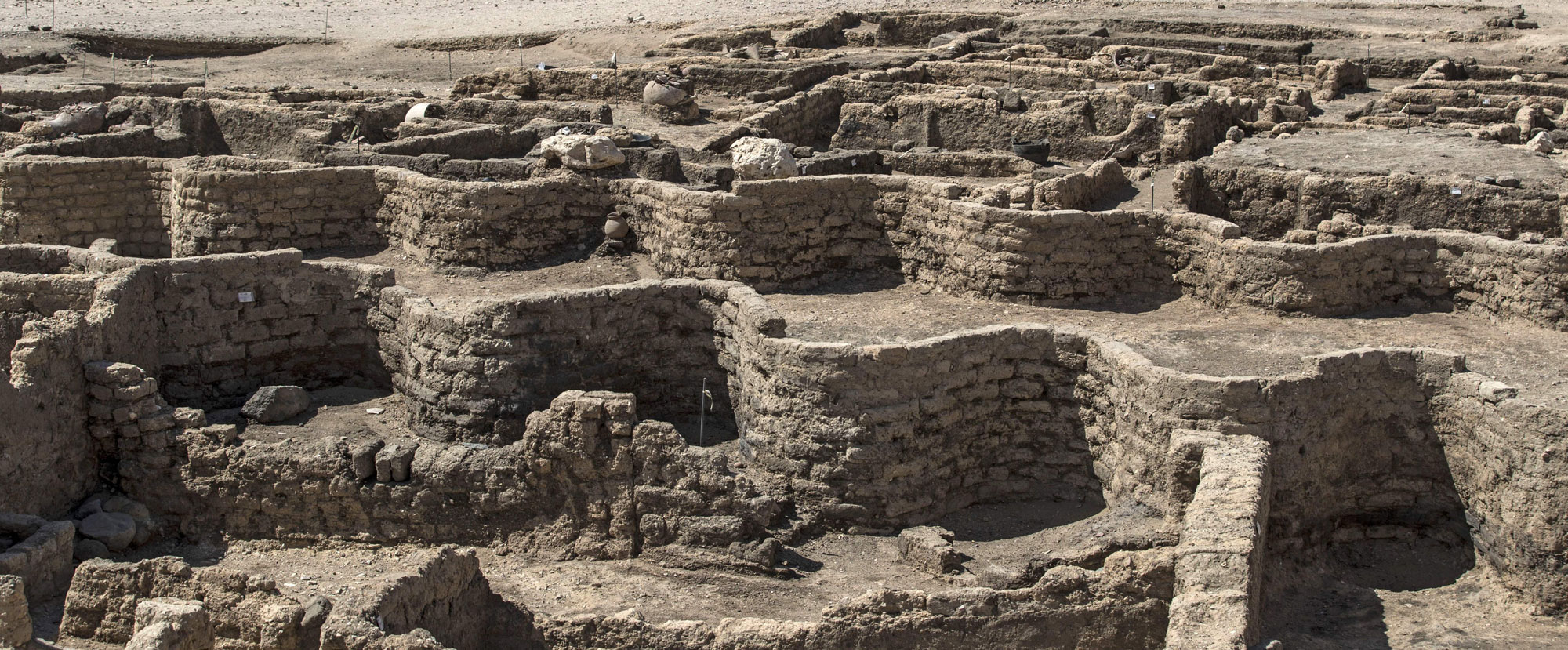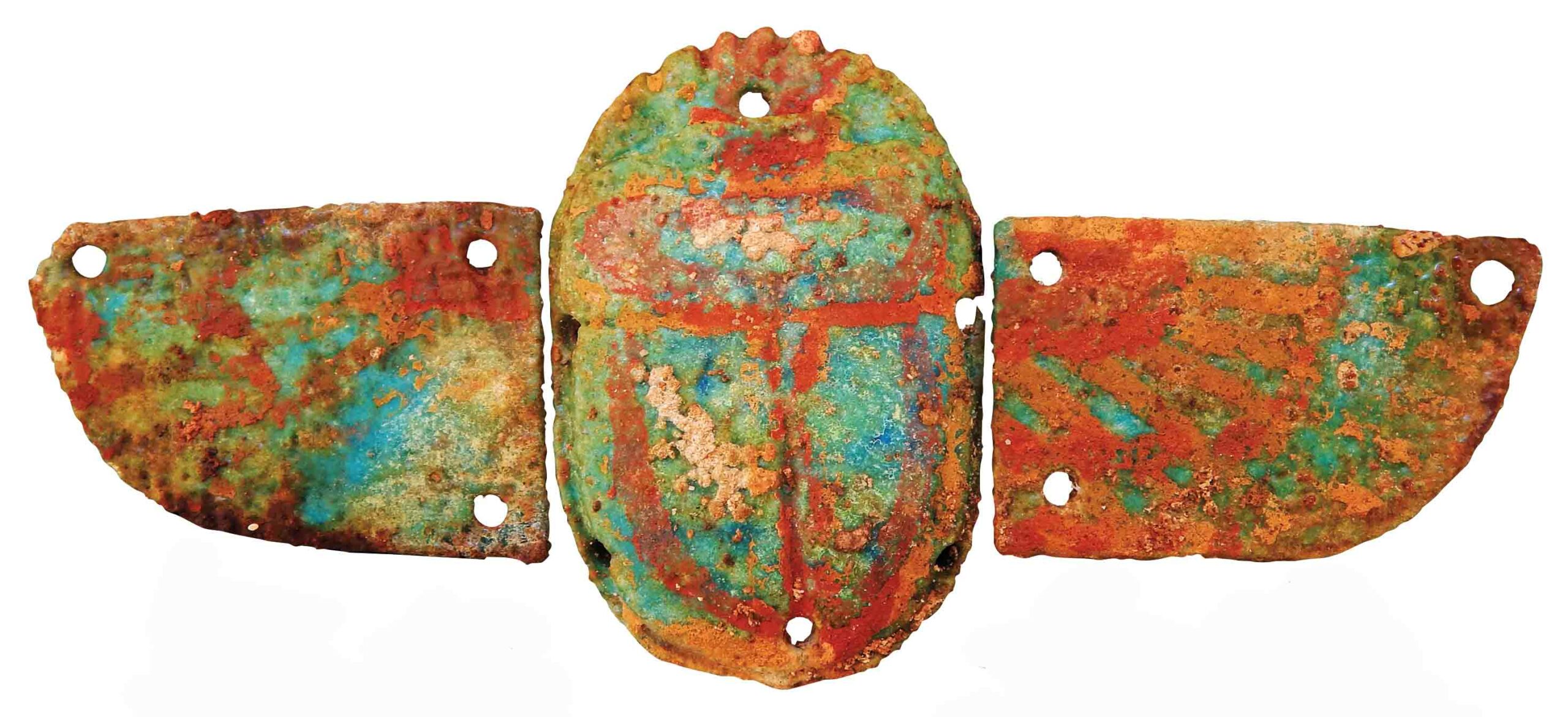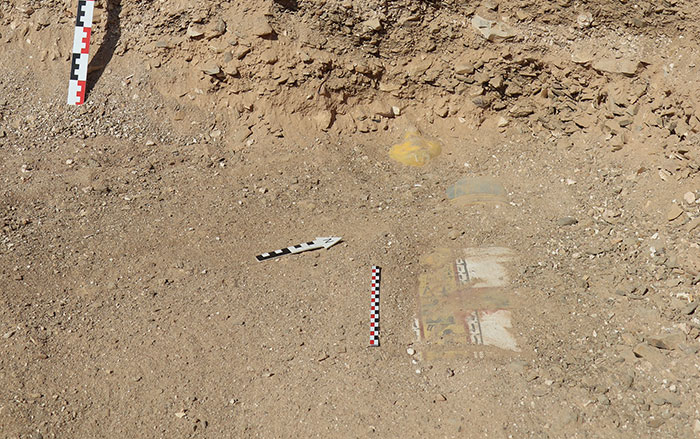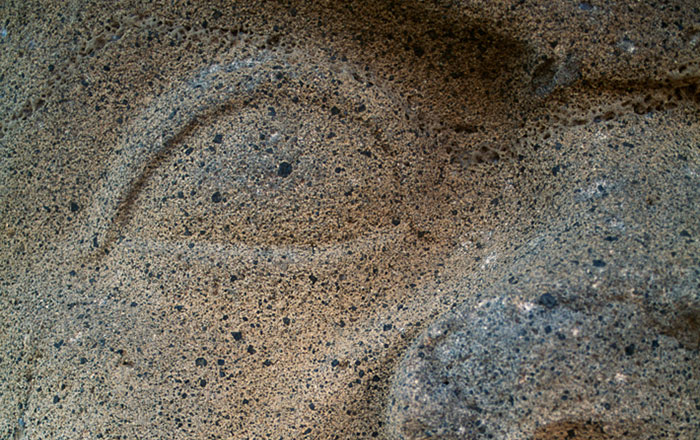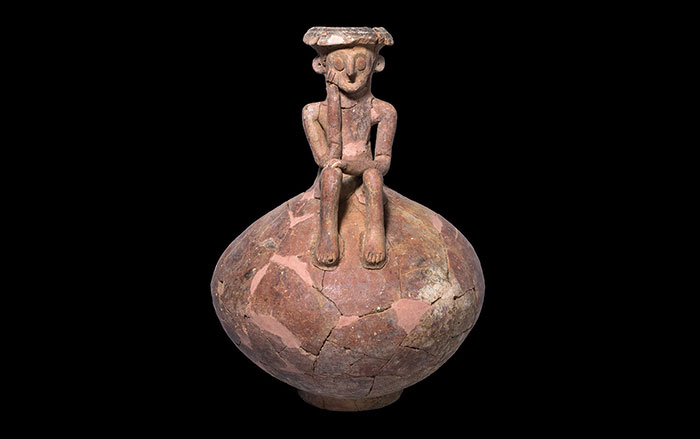
LUXOR, EGYPT—According to a report in Ahram Online, a 4,000-year-old funerary garden has been found in the Dra Abul Naga necropolis by a team of Spanish archaeologists. The garden was placed in the open courtyard of a rock-cut tomb. Measuring about ten feet long by six and one-half feet wide, the garden was separated into sections about one foot square. Each square is thought to have contained different kinds of plants and flowers. An elevated area in the middle of the garden may have supported a small tree or bush. A corner of the garden contained the roots and trunk of a small tree, and a bowl of dried dates and other fruit. “The discovery of the garden may shed light on the environment and gardening in ancient Thebes during the Middle Kingdom, around 2000 B.C.,” said Jose Galan of the Spanish National Research Council. Galan added that this is the first time that a funerary garden has been uncovered in ancient Thebes. His team also unearthed a small mudbrick chapel holding three 13th-Dynasty steles at the site of the rock-cut tomb. For more, go to “A Pharaoh’s Last Fleet.”


